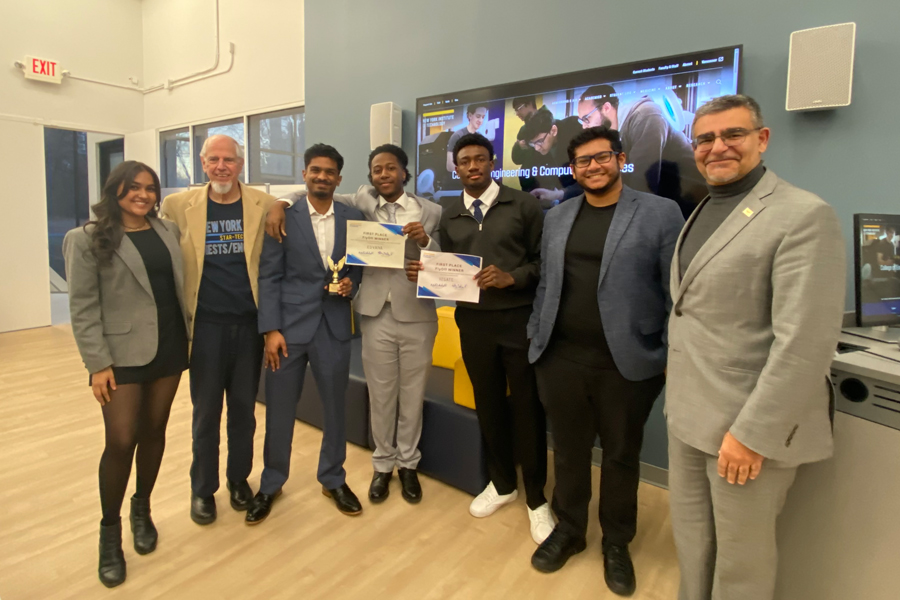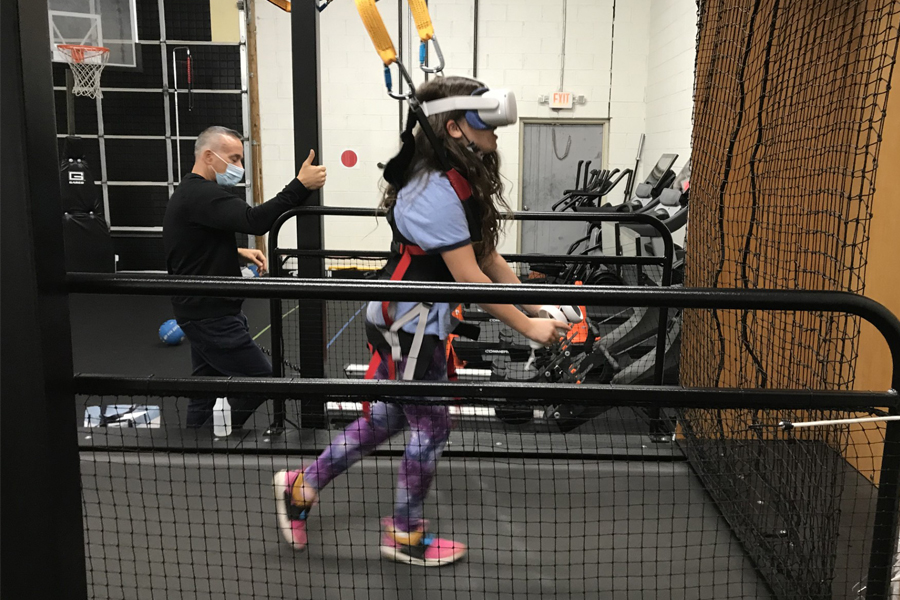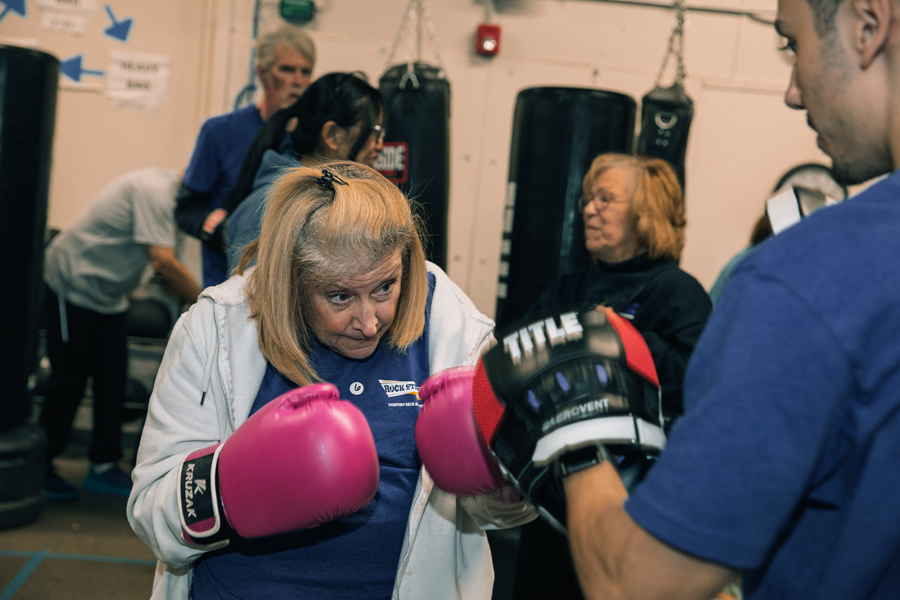Awarding High School Researchers
Continuing its commitment to undergraduate research and encouraging high school students to pursue science, technology, engineering, and math (STEM) fields, New York Tech has completed the eighth year of its Mini-Research Grant Awards (MRGA) program. Research projects were received from 42 high schools across the country; 35 grants were awarded to projects from 22 high schools.
The $300 awards are made possible through the support of the Voya Foundation, whose funding supports the university’s continued commitment to diversify STEM leadership. The $300 awards are applied to expenses the high school student-researchers incurred during new or continuing research in STEM and related disciplines this academic year. The 2025 program received nearly 150 research project submissions; the number of student applications totaled 243.
The review committee includes Niharika Nath, Ph.D., professor of biological and chemical sciences who founded the program eight years ago and continues to oversee it; Rosemary Gallagher, D.P.T., Ph.D., professor of physical therapy; Wenjia Li, Ph.D., associate professor of computer science; and Amy Bravo, senior director of career success and experiential education. New York Tech undergraduate and graduate students who assisted in the grant review process are biology students Andrew Attia, Desirae Rausch, and Yamini Patel; biotechnology students Heer Bhuva and Vishva Patel; Doctor of Physical Therapy students Charles Siguenza and Daniel Chan; M.B.A. student Sarada Swarna, and computer science graduate student Pradnya Gite.
The high school research projects ranged in topic from “Assessing the Gastrointestinal Permeability in Caenorhabditis elegans Exposed to Gluten and Casein: Implications for Autism Spectrum Disorder” submitted by Crescenta Valley High School in La Crescenta, Calif., to the “Impact of Native Indian Grass Blend (Sorghastrum nutans, Elymus canadensis, Andropogon gerardii) on Metal Contaminants in Soil” submitted by Global Impact STEM Academy in Springfield, Ohio. Many projects were submitted by high schools in the New York metropolitan area, including Walt Whitman High School in South Huntington on Long Island. A five-student research team submitted “The Development of a Replicable Low-Cost Lycorma Delicatula Trap” to research the invasive spotted lanternfly threatening agriculture and ecosystems in the northeastern United States. A local media outlet highlighted the team’s success in the MRGA program. Local media also highlighted two winning projects from Sacred Heart Academy in Hempstead, N.Y.

Topics of research projects selected for MRGA funding include:
- “Using ML to Protect ML: Defending against Malicious Clients in Public, Large-Scale Privacy-Preserving Model Training Scenarios”
- “An Affordable Robotic Exoskeleton for Those with Mobility Difficulties”
- “The Correlation of Type 2 Diabetes in Increasing the Risk of Alzheimer’s and Utilizing Ashwagandha as a Potential Therapeutic”
- “Ear-ly Detection: A Machine Learning Approach to Identification of Ear Diseases”
- “BioCycle: A Novel Biodiesel Reactor for Sustainable Waste Oil Recycling in Small and Mid-Sized Restaurants”
- “Pollinator Preference between Native and Cultivar Varieties of New England Asters”
- “Using A Dual Model Reinforced Learning Setup to Generate Energy Efficient Building Designs”
- “Unveiling the Impact of Fertilizers on Algae: Investigating Agricultural Runoff’s Role in Toxic Blooms”
“Thank you for choosing our group studying the role of agricultural runoff in toxic blooms to win the mini-grant award. We are very excited to accept this award and are very grateful for your support,” said Gisselle Jaime, a student at Brentwood High School. “We are extremely excited to use the money toward buying a microscope that can observe algae cells, so that we can see the difference between the groups with fertilizer and the ones without it.”
Applications for the ninth annual Mini-Research Grant Award for high school students will open in fall 2025.
More News

Brands Must Balance AI and Authenticity
As consumer behavior expert Colleen Kirk, D.P.S., explains, in 2026, marketers leveraging AI must remember to prioritize genuine connections and transparency.

Student Entrepreneurs Share Big Ideas
Students gathered at the Innovation and Entrepreneurship Academy’s Startup Tech Central to present their startup companies at the third NESTS FlyOff event.

Intern Insight: Ananya More
When graduate computer science student Ananya More secured an internship with the MTA, she gained the opportunity to work with data for the largest subway system in the United States.

Study: VR Helps Children With Autism Participate in Exercise and Sports
A new study by researchers from the School of Health Professions and College of Osteopathic Medicine demonstrates how virtual reality (VR) can help children with autism spectrum disorder participate in exercise.

Boxers Fight Back Against Parkinson’s Disease
A holiday “boxathon” hosted by NYITCOM’s Parkinson’s Center raised awareness for the disease and the importance of exercise in treatment, while bringing members of the Rock Steady Boxing community together at a time when patients may experience loneliness and isolation.

“Envisioning” More Inclusive Eyewear
As part of a collaborative initiative between New York Tech and the global eyewear company Marcolin, students from the School of Architecture and Design and NYITCOM teamed up to develop potential eyewear solutions for neurodivergent populations.